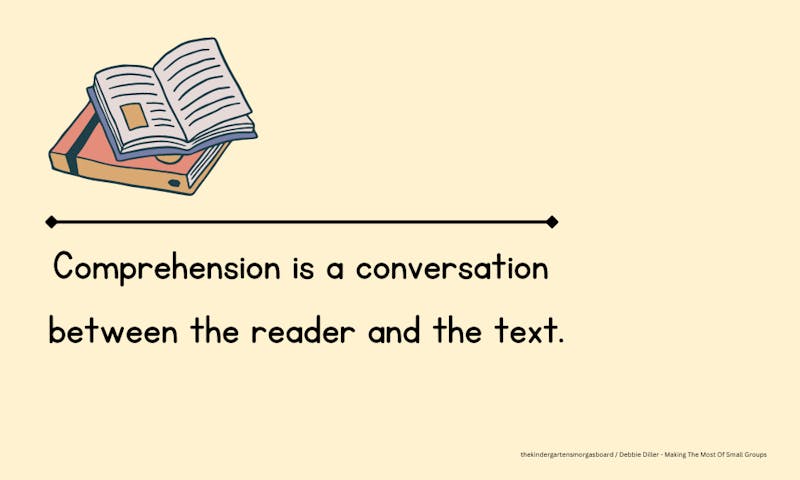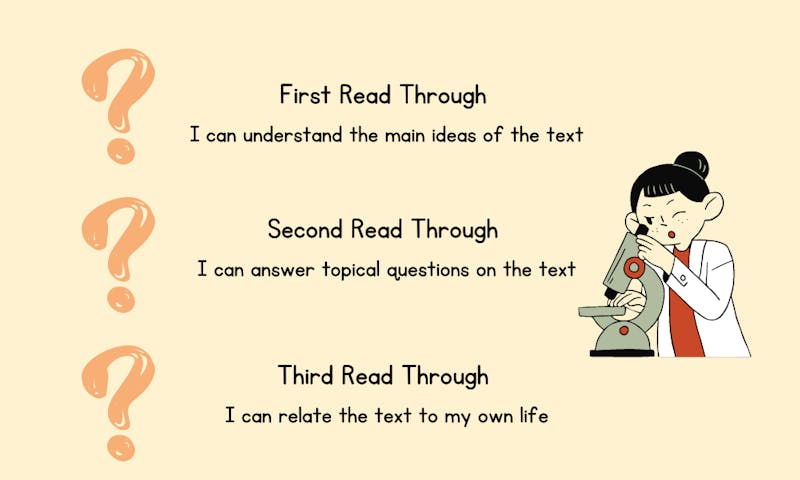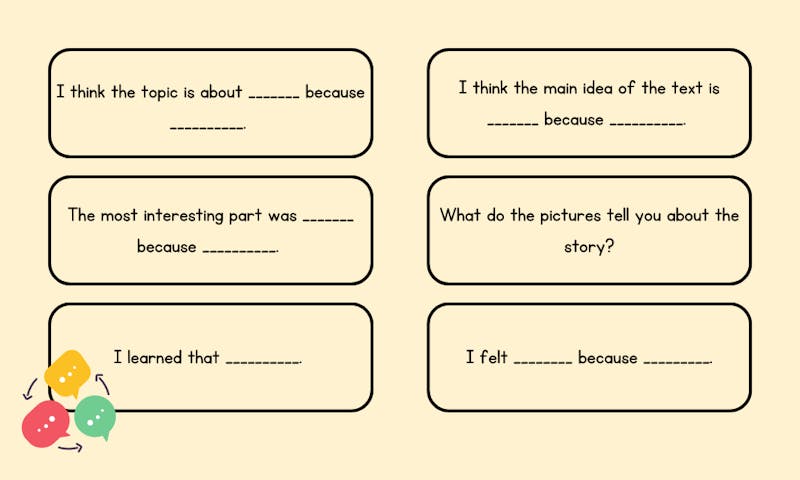Comprehension is the whole point of reading; without reading comprehension, we wouldn't understand or process information. Research-based best practices for Language Arts teachers are important whether you're a newbie to the field of teaching or a veteran. We want to make our students as best equipped as possible, giving them tools to become proficient readers and enjoy their reading process journey from Kindergarten to Grade 6.
Our handy, quick, easy-to-access reading comprehension worksheets, practice activities, practice guides, and interactive pages are designed for you as a busy teacher to spend less time on planning and more time on doing what you do best, instructional and comprehension instruction! There isn't an obvious answer when teaching comprehension, but our resources should help get your students on track, and we'll even mention how electronic devices can help you along the way!
Reading Comprehension Worksheets By Grade Level
Check out our list of reading comprehension worksheets and activities designed to get the best out of your students, whatever their reading grade level.
Kindergarten
Work on cause and effect, engaging activities, stories with question cards, standard-based phonic and word recognition flashcards from the worksheets on your electronic devices, and more. Here we cover Literacy Reading Comprehension practice with the CCSS RL.K.1, RL.K.2 RLK.3, RL.K.4, and RL.K.7 and Reading Comprehension Informational Text worksheets for RI.K.1, RI.K.2, RI.K.3, and RI.K.7.
1st Grade
These reading comprehension worksheets are designed for students at a first-grade reading level. They work on recalling simple information from the text, sequencing, and phoneme blending practice according to the U.S. Department of Education, CCSS Literacy Reading Comprehension RL.1.1, RL.1.2, RL.1.3, RL.1.4, and RL1.6, RL.1.7 and Reading Comprehension Informational Text - RI.1.1, RI.1.2, RI.1.3, RI.1.4, RI.1.6, and RI.1.7.
2nd Grade
Work on story elements with your 2nd-grade students, sequencing, and spelling-sound correspondences. We follow the Literacy Reading Comprehension CCSS - RL.2.1, RL.2.2, R.L.2.3, RL.2.4, RL.2.5, R.L.2.6, RL.2.7, and Reading Comprehension Informational for 2nd-grade CCSS - RI.2.1, RI.2.2, RI.2.3, RI.2.4, RI.2.6, RI.2.7, and RI.2.8.
3rd Grade
Third-graders will love our worksheets on distinguishing fact from opinion, comparing and contrasting, and reading comprehension. We follow the Literacy Reading Comprehension U.S. Department of Education CCSS - RL.3.1, RL.3.2, RL.3.3, RL.3.4, RL.3.5, RL.3.6, and Reading Comprehension Informational Text - RI.3.1, RI.3.2, RI.3.4, RI.3.6.
4th Grade
4th-grade students will learn how to practice and understand words from context clues and the author's purpose. They will also learn to infer and identify fact from opinion with our Literacy Reading Comprehension Worksheets - RL.4.1, RL.4.2, RL.4.3, RL.4.4, RL.4.5, RL.4.5, RL.4.6, and Reading Comprehension Informational Text Worksheets: RI.4.1, RI.4.2, RI.4.3, RI.4.4, RI.4.5, RI.4.6. Remember every reading level is different, some kids may have a lower ability of readers and may need a little extra help.
5th Grade
Improve your reading-related activity strategies for your 5th-grade students and improve their observational studies strategies. We have high-interest stories for more mature readers of fiction, nonfiction passages, literary devices, and reading process strategies with reading comprehension questions at the end, as well as practice vocabulary building per the CCSS 5th-grade Literacy Reading Comprehension - RL.5.1, RL.5.2, RL.5.3, RL.5.4, RL.5.5, RL.5.6, and Reading Comprehension Informational Text - RI.5.1, RI.5.2, RI.5.3, RI.5.4, RI.5.5, RI.5.6.
6th Grade
6th-grade students need inspiratory ideas to learn how to infer information, approach reading segments, identify themes, types of characters, figurative language, meanings from context, context clues, high-interest stories, and nonfiction passages, comprehend explicit instruction, and much more to get them ready for the seventh and eighth grades! Our mature reader practice worksheets are designed to follow the CCSS RL.6.1, RL.6.2, and RL.6.4 and Reading Comprehension Informational Text - RI.6.1, RI.6.2, RI.6.3, RI.6.4, RI.6.5, and RI.6.6.
Why Are Reading Comprehension Instructional Strategies Important?
There is no obvious answer when teaching reading comprehension, and there are so many ways to teach your students with reading-related activities. Still, sometimes even the best Language Arts teachers run out of additional ideas and rely heavily on explicit strategy instruction. This isn't always a bad thing as it's heavily structured, allowing the students to learn and practice what they need to do for themselves eventually.
To begin this process, we have to start with modeling, and that's where explicit teaching strategies instruction comes in. Students learn more efficiently according to the Principles of Instruction when teachers deliver new information and explicit instruction and then help them relate it to what they already know. Further corrective feedback can come when students know what to look out for, comprehend, and practice.
However, we sometimes need to focus on reciprocal teaching to give students autonomy over their own learning. That is not to say that instruction of comprehensive strategies need to be solely focused on inquiry and discovery as, in the end, children need to pass their exams and learn from research-based activities. However, comprehension helps create proficient and able readers who begin to question, devise, and answer questions and ideas when approaching reading segments. While teaching students to use literary devices in their writing is essential, it may be just as useful to look for electronic devices that can push them forward, whether they're in eighth grade or first grade.
We want to provide exciting practice books and reader-related activities to channel your students' focus on engaging activities. You can easily increase your students' observational studies and skills by making full use of electronic devices, interactive approaches, and a mix of explicit teaching, independent reading, and creative additional ideas. Check out our other resources to help you save your precious time!
5 Effective Strategies For Reading Comprehension: Narratives
There's only so much time in the day to complete everything you need, from SIP curriculum meetings, parent-teacher conferences, grading, and building relationships with your students; there is no obvious answer! The week can seem like a slow slog to get to the weekend, so reclaim your time in your reading sessions with efficient explicit strategy instruction and practice time. The less time you spend planning, the more you can spend on instructional time and explicit teaching to develop confident readers with efficient reading process strategies in your classroom.
Visual Story Maps
For younger grades, visual story maps are a great idea to have on hand, especially for direct instruction and decontextualized instruction. The comprehension process starts way before the child even begins to approach a reading segment on the page. They process what they can see from the picture book and the words being read to them. By listening to the words, they start associating the pictures with the words being said and make inferences from them, which in turn, is the starting point for developing confident readers. For younger grades, isolated instruction and explicit teaching are key, especially isolated instruction of comprehension strategy. English Language Arts teachers should always aim to search for the best instruction of comprehension strategy.
As they get older and your students become mature readers, you can include story maps and practice guides with the plot, setting, and sequence of events. This way, they can learn how the sequence of events affects the plot, and you've ticked off a few common core standards! Have them create their own story maps and practice reciprocal teaching, putting your students at the forefront of their education.
Discussion Time
Question your students on what they see and hear. Having them retell stories in their own words helps you check for comprehension and allows them to develop their presentation skills. You can put them into buddy reading groups and give them some prompt cards to keep them on track and help them practice. Use this strategy as isolated instruction or combine it with your other instruction of strategies and practice techniques.
Teach Your Students To Predict
You can get your students to predict what will happen with simple visuals before you read the book, show them some pictures, or read them a short passage, helping you build readers' ability in your classrooms. Use this skill in your instruction of strategies tool kit to help you get the best out of your students.
Flip each flashcard to get some question prompt ideas.
Efficiently Plan Group Reading Sessions
Splitting your reading sessions into reading segments effectively reduces admin time and works on reciprocal teaching. You can start to focus on oral and silent reading strategies with guidance around first grade and go from there. Spend time on read-alouds in class and smaller groups as part of your instruction of comprehension strategy. Younger and older pockets of students will love this, and it helps you, the expert, to model good reading practice behavior. Remember, even upper elementary students love to get transfixed into a good story through reading-related activities, so accept any additional ideas they may have!
Teach Your Students About Self-Questioning Skills
Read-alouds are also a fantastic strategy for getting students used to comprehending information as they go. Have you read through an entire story and understood every single minute detail? Well, your students won't have either, and you might get some blank faces looking back at you; modeling comprehension questions in instructional time during the reading segments will help. Focus on WH questions, such as, who is this story or chapter about, what just happened, and why. The more questions you ask in these sessions, the more your students will internalize them when they read to themselves.
Effective Tips For Improving Your Students Reading Skills For Informational Text
As part of the CCSS, you must expose your students to informational texts. Still, sometimes it can be tricky to find the obvious answer. Some informational texts contain just that, a lot of information to process, and students are much more likely to grab familiar stories full of interesting characters and adventures. But you can keep your students engaged with explicit teaching practice and plenty of independent instructional techniques. Keeping students engaged and off the table snoozing. Keep reading for more Language Arts Teacher ideas on informational texts and instruction of comprehension strategies to give your students a love of reading text-heavy non-fiction.
Anchor Charts
Anchor charts are the bread and butter of any Language Arts Teacher's classroom and can really help your reading strategy when it comes to close reading with your students. There are a few different close-reading ideas to choose from, and it really depends on the length of the text you've chosen. You can use the following practice anchor chart idea to split longer and shorter texts, and it encourages re-reading for full comprehension.
You can use the anchor chart for split reading segments or combine your reading strategy with the following ideas for longer texts.
Question Prompts
Not all questions are equal! To develop a deeper understanding of the text, give your students question prompt cards that use related topics, and never forget to implement explicit teaching. Helping them engage in meaningful discussions with their peers during close reading activities. The purpose is for students to pay close attention to details and be able to comprehend using extensive reading comprehension strategies. Check out some examples below.
Organization
Help your students to develop their own reading comprehension skills with clever organization and additional ideas. Have graphic organizers and useful printables to help them make connections, comparisons, and inferences from the text, take meanings from context, and much more. Any resource you give to your students should help them dig deeper, practice, and learn about strategies for understanding almost any text.
Check for Comprehension
Once students have finished analyzing the text and reading segments in groups or individually, have them write about what they learned or observed, which also ticks off another core standard! It helps you to check what they think, and as they grow more confident in their abilities, they can even practice coming up with questions for each other and rely less on explicit instruction. If electronic devices are available to you, have them use them to write.


